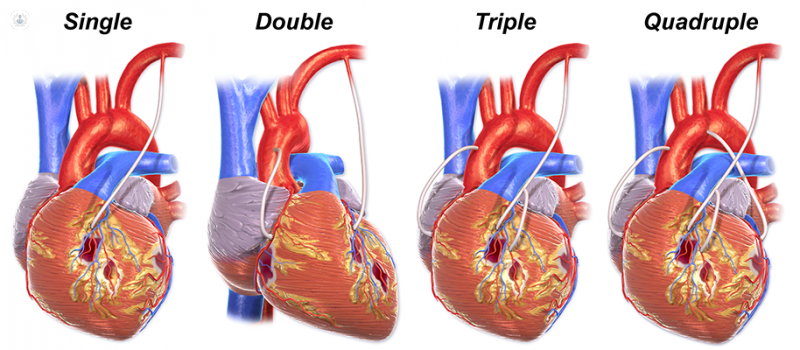


What is minimally-invasive beating heart coronary heart bypass surgery?
Minimally-invasive beating heart coronary heart bypass surgery is a unique procedure as it is performed whilst the heart is still beating and without a heart-lung bypass machine. The surgeon cuts several small incisions into the chest (a thoracotomy) to access the coronary arteries. The smaller cuts expose only the sections of arteries that require grafts without exposing the whole heart. This means that the patient has a lower risk of infection and that they will not be left with a large scar (from a sternotomy) as they would with traditional, open surgery.

Why is it done?
This method of bypass surgery has numerous benefits for the patient, the main being that there is a lower risk of complications. This is because the heart does not have to be stopped and connected to a heart-lung bypass machine for the duration of the operation. Additionally, the wound left by the procedure is much smaller and has a lower risk of infection because of this. Heart bypass surgery is carried out for patients with who have blocked arteries and are at a high risk of heart failure or a heart attack. Heart bypass surgery can ease the symptoms of coronary artery disease.
The main benefits of minimally-invasive beating heart bypass surgery are:
What does it involve?
Minimally-invasive beating heart bypass surgery can be performed in two different ways:
MIDCAB:
MIDCAB surgery does not use a heart-lung bypass machine, as the heart remains beating throughout the procedure. A number of small incisions are made in the chest to access the relevant coronary arteries. These are known as thoracotomies. This exposes only the arteries that require bypassing, reducing the risk of infection. The scars that result are small. If there are numerous articles that require bypassing on either side of the heart, MIDCAB may not be used because it only isolates a small number of arteries with the incisions made.
OPCAB:
This second type of beating heart bypass surgery requires just one larger incision, however, there is no need for a heart-lung bypass machine.
How do you prepare for it?
Before this procedure is chosen for you by your specialist, you will have had a chest X-ray, ECG, echocardiogram and a coronary angiogram to determine your overall health and the location of the blockages (i.e. the sites for bypass grafts). The procedure can last up to six hours and requires general anaesthetic and a breathing tube.
Aftercare:
Following the operation you will be kept in an intensive care unit (ICU) where your vital signs are closely monitored. Once you are stable you will stay in hospital for approximately five days. After this you can return home, however, rest is advised for a number of weeks. You will need to move around though, talking short walks around the house to begin with. Full recovery takes several weeks.
Alternatives to this treatment:
The alternative to minimally-invasive beating heart bypass surgery is either open beating heart surgery, or bypass surgery that uses a heart-lung bypass machine.